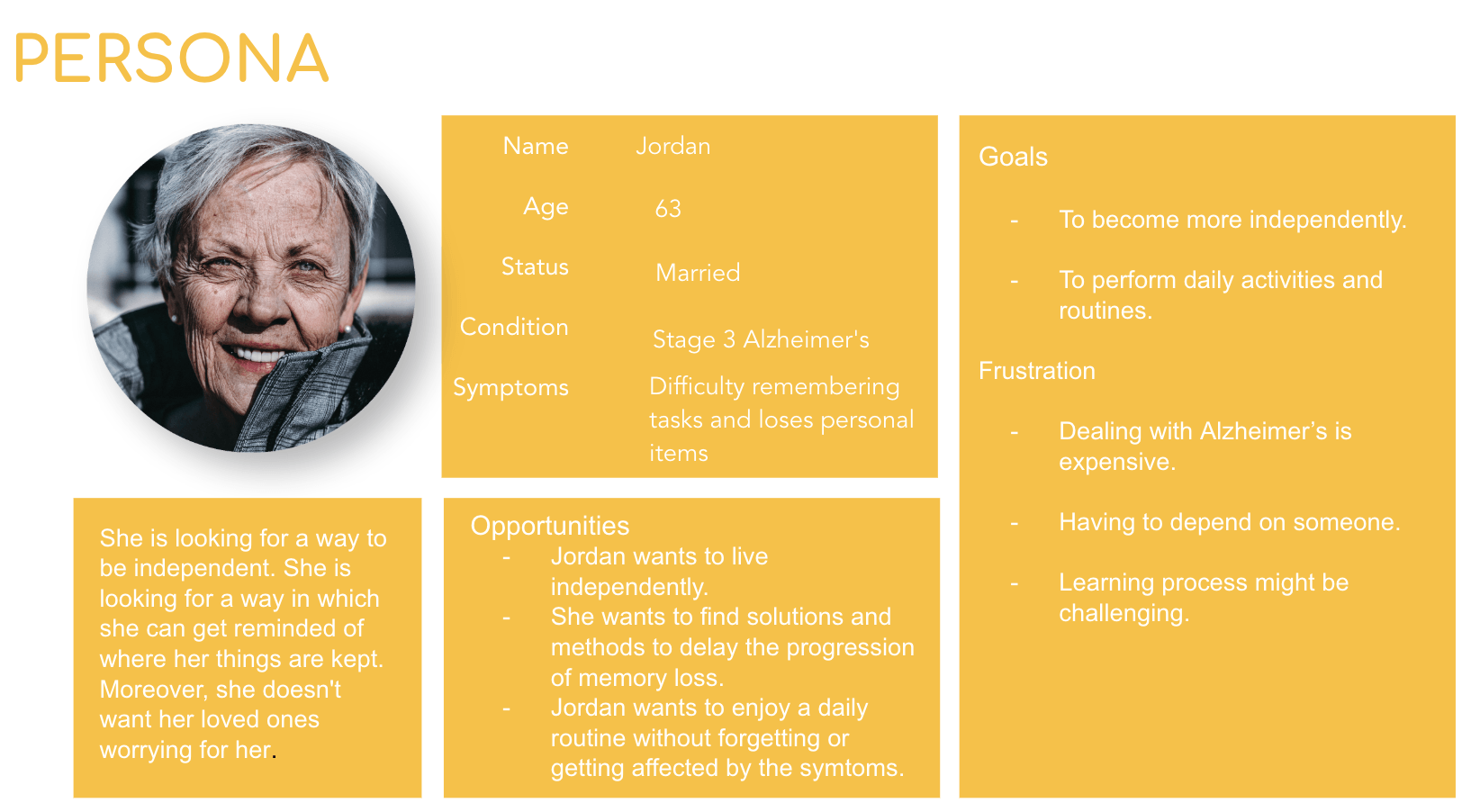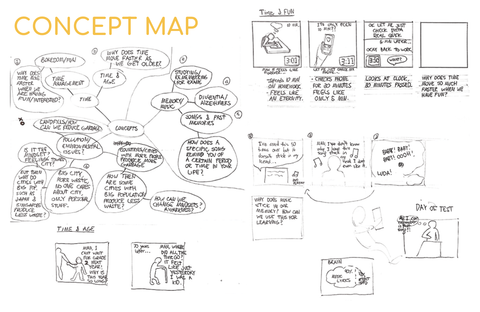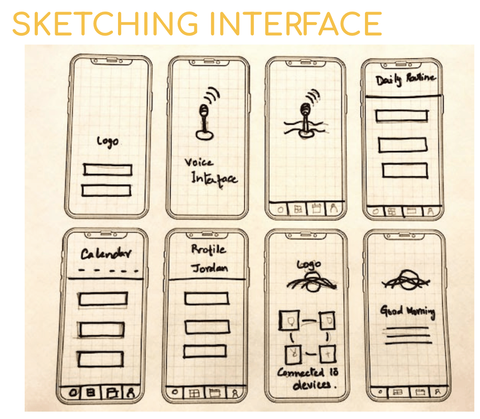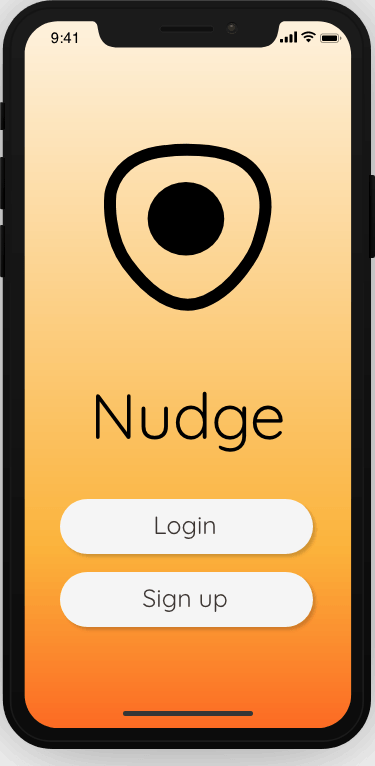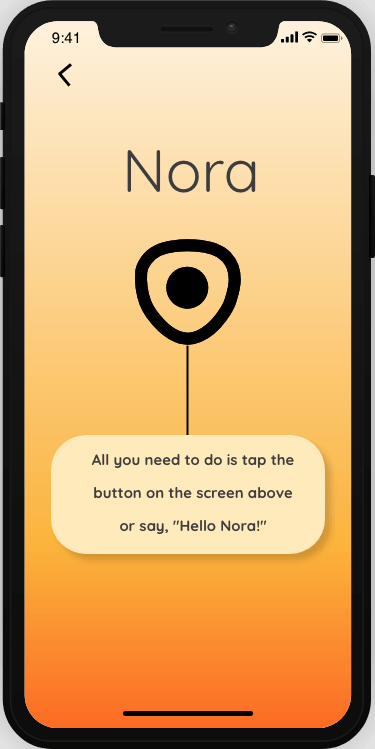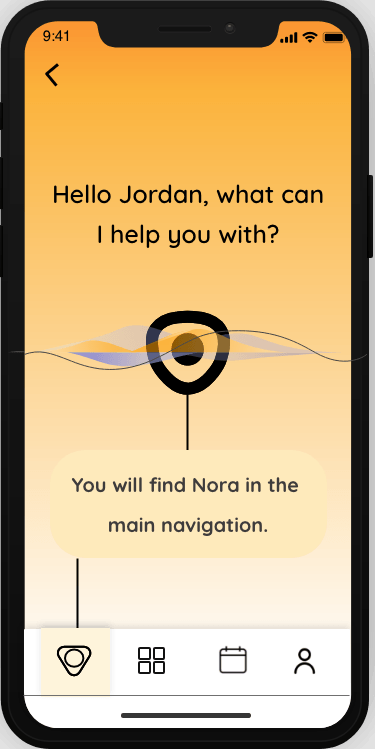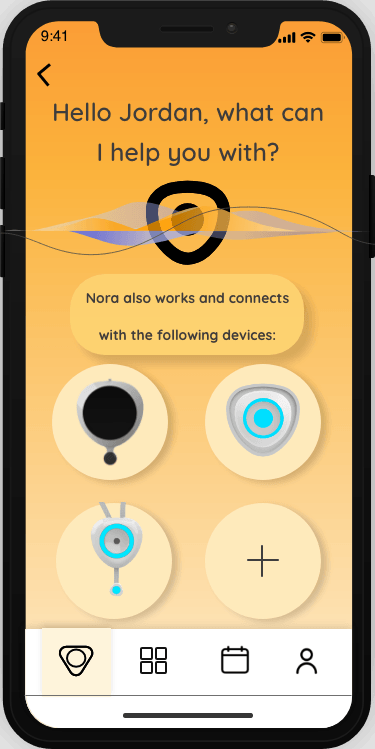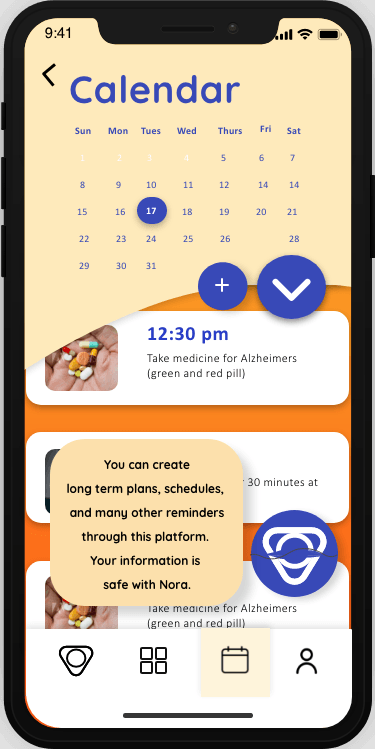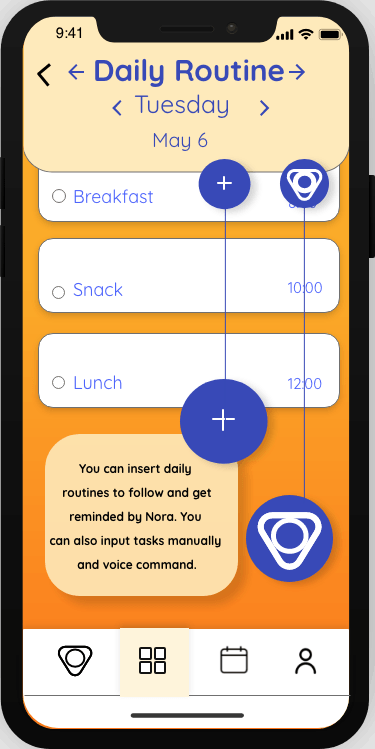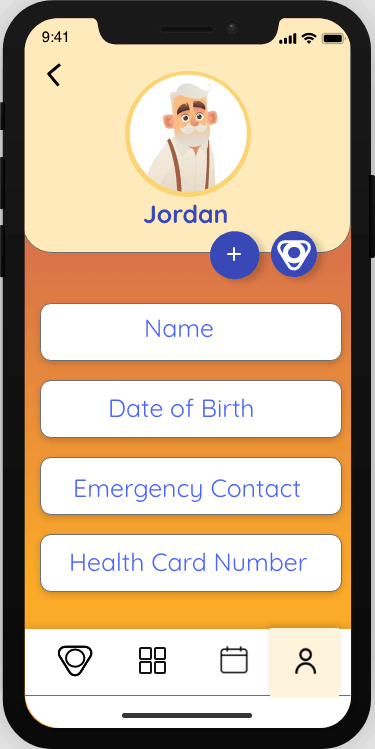Nudge
Nudge
Role: Researcher, Persona, Drawing Sketches, and Writing Microcopy (UI and VUI)
Role: Researcher, Persona, Drawing Sketches, and Writing Microcopy (UI and VUI)
This is an assistive technology made to delay the progression of Alzheimer's disease, helping people at the early stages bridge the memory gap, live happily, and independently.
Design Question
Design Question
How might we aid early stage Alzheimer's disease patients through the use of technology, while making it simple to use and helping the user gain independence?
Research Findings
In Canada, there are over 747 000
people living with Alzheimer’s disease or other forms of dementia. Worldwide, there are over 44 000 000
people suffering from the aforementioned conditions. This makes Alzheimer’s disease and dementia a global concern that must be addressed, as the rate of Alzheimer’s disease is increasing amongst older members of society.
Alzheimer's disease is a degenerative disorder that causes brain cells to deteriorate and die. During the early stages of Alzheimer’s disease, the affected person will usually have difficulty remembering to take their pills and they may lose some of their personal items. In the further stages, an affected person will not be able to carry out their daily tasks as they used to and their memory is deeply impaired.
Individuals with Alzheimer's disease may feel that they are burdens to their loved ones and they strive to be more self-sufficient.
To cover the needs and wants of these individuals, Nudge has developed a system that will help people with early stage Alzheimer's disease feel and be more independent!
Ideation
- The concept map shows a few ideas that were brainstormed
- These ideas include other subjects including Alzheimer's disease
- Initially music was a feature that our team wanted to explore in regards to memory and Alzheimer's disease, but that idea was fazed out after further research was conducted and other ideas were brainstormed
Sketching
Prototyping
The prototype shows the UI of the mobile application. The microcopy demonstrates friendly text which will engage the user and seem conversational.
How It Works
Hot Spots
Nudge hot spots can be conveniently placed around the home. They light up when they detect motion in the area they are installed in. The user can also interact with Nudge by calling upon Nudge’s digital voice assistant, Nora.
Home System
Nudge hot spots are wall-mounted and connect to one base. Hot spots are available in a pack of four.
Wearable
Nudge can be worn in and out of the house. It has an adjustable pendant that will help the user stay connected with their home system. The wearable includes a GPS as a safety and memory recall feature. The user can also interact with Nora (digital voice assistant) for assistance.
Base
The base is wall-mounted and the nudge pendant (wearable) charges through the base. The user can monitor their hot spots and wearable, view and update reminders, and interact with Nora (digital voice assistant) through the application. When the base is idle, the time and date are displayed on the base’s screen.
Mobile Application
The mobile application for Nudge allows the user to update their information, view and update reminders, monitor the hotspots, and interact with Nora (digital voice assistant).
Further Development
- The AI can be integrated with Voice ID
- Repeated usability testing until the concept is further refined
- Refining our concepts based on the feedback from the user testing
